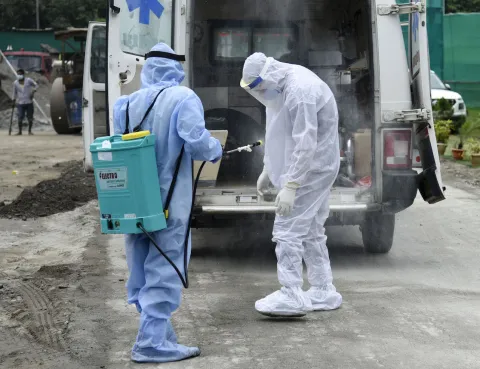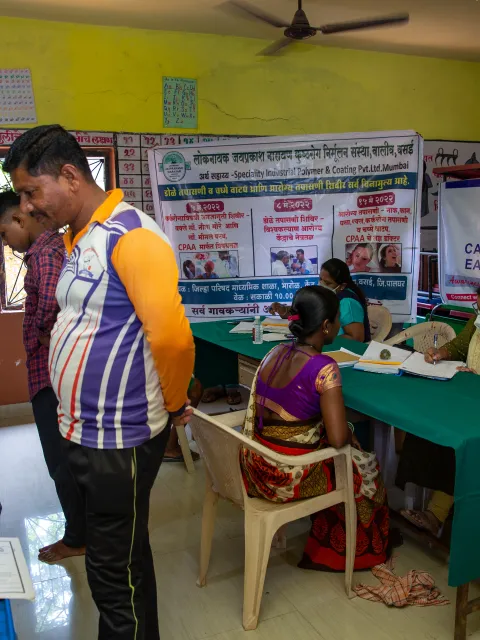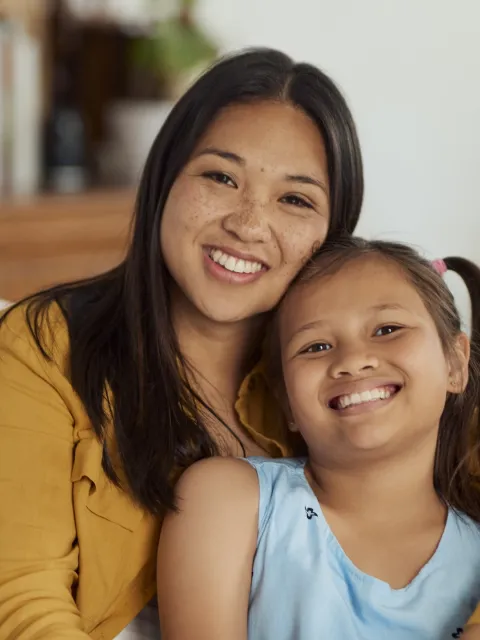Cancer care in India during COVID-19: lessons learned and innovations
While India tragically made international headlines in April 2021 with the emergence of Delta variant of COVID-19, cancer care suffered less in that deadly wave due to lessons learned from the first wave in 2020.

During the first nationwide lockdown in India from March-May 2020, hotels and transportation shut down limiting patients' accessibility to cancer care facilities, oncological services had to be restructured to allocate beds and hospital resources to COVID-19-related care and emergencies. Also, advanced and complex procedures were reduced as they sometimes require significant infrastructure support. Blood donations were also few during complete lockdown due to patient’s fear or inability of people to come to care centres.
Dr Supriya Chopra, Professor Radiation Oncology at Tata Memorial Hospital and past UICC Young Leader, said that hospitals saw a drop in treatment compliance rates – e.g. the percentage of cervix cancer patients who completed their treatment reduced from 90-95% to 65-70%. Furthermore, since many patients were not accessing routine cancer services in 2020 but just monitoring symptoms, the oncology staff saw an increase in the number of cancers diagnosed at a later stage in early 2021.
“We realised that while very few cancer patients suffered from direct consequences of COVID-19, many of them suffered from the fear response to COVID-19 and from the inability to access cancer care facilities because of lockdown to contain the spread of the virus.”
– Dr Supriya Chopra, Professor in Radiation Oncology at Tata Memorial Hospital, UICC member and part of the Cancer Advocates programme
During India’s severe second wave of COVID-19 due to the Delta variant in April-May 2021, cancer services did not suffer as much – chemotherapy, for instance, had resumed in August 2020 and continued through the second wave – and now compliance levels have returned almost to normal. According to Dr Chopra, this is because, on the one hand, lockdowns were local rather than nationwide and, on the other, oncology professionals learned from their experience and outcome data collected in 2020.
During the first wave, staff was downsized and many workers fell sick. In the second wave, however, Dr Chopra says that they were able to work at full capacity because a significant proportion of health care staff were already vaccinated. This period also witnessed rapid adoption of more innovative ways of delivering cancer care – for instance, radiotherapy protocols were modified to deliver external radiation and brachytherapy (a type of internal radiotherapy) in fewer sittings. Normally internal radiation for cervix cancer is delivered in 3-4 sittings over 3-4 weeks. During the pandemic, however, it was remodelled to be delivered in one sitting over 2-3 days which was suited to the needs of patients and health systems. This allowed cancer care centres to better manage multiple admissions by delivering treatments with similar intensity that require fewer visits.
In terms of COVID-19, the figures are currently promising, with approximately 40,000 daily cases – 11% of peak numbers – and a mortality rate that has dropped considerably since June. Dr Chopra says there is still a lot that needs to be studied, about the long-term impact of the pandemic. The stress faced by physicians, not only in their professional capacity facing COVID-19 but also in their personal spheres as they were unable to see their families for over a year, is a particular area of concern.
“There will be an emotional fallout from the pandemic that we aren’t able to measure yet – the focus has been on providing care and cancer patients’ needs. Doctors consider this as a duty, like soldiers on a battlefield, but we have small children and ageing parents who also need care.”
– Dr Supriya Chopra, Professor in radiation oncology at Tata Memorial Hospital, UICC member and part of the Cancer Advocates programme
The situation in India holds some promise for other countries still struggling with the worst of the pandemic. It does show, however, that sufficient and significant resources in terms of funding, staff and technology are required to address the gaps in cancer care and the disruptions to services caused by the pandemic and to avoid a future health crisis of late diagnoses and increased cancer mortality.
Last update
Tuesday 23 November 2021
